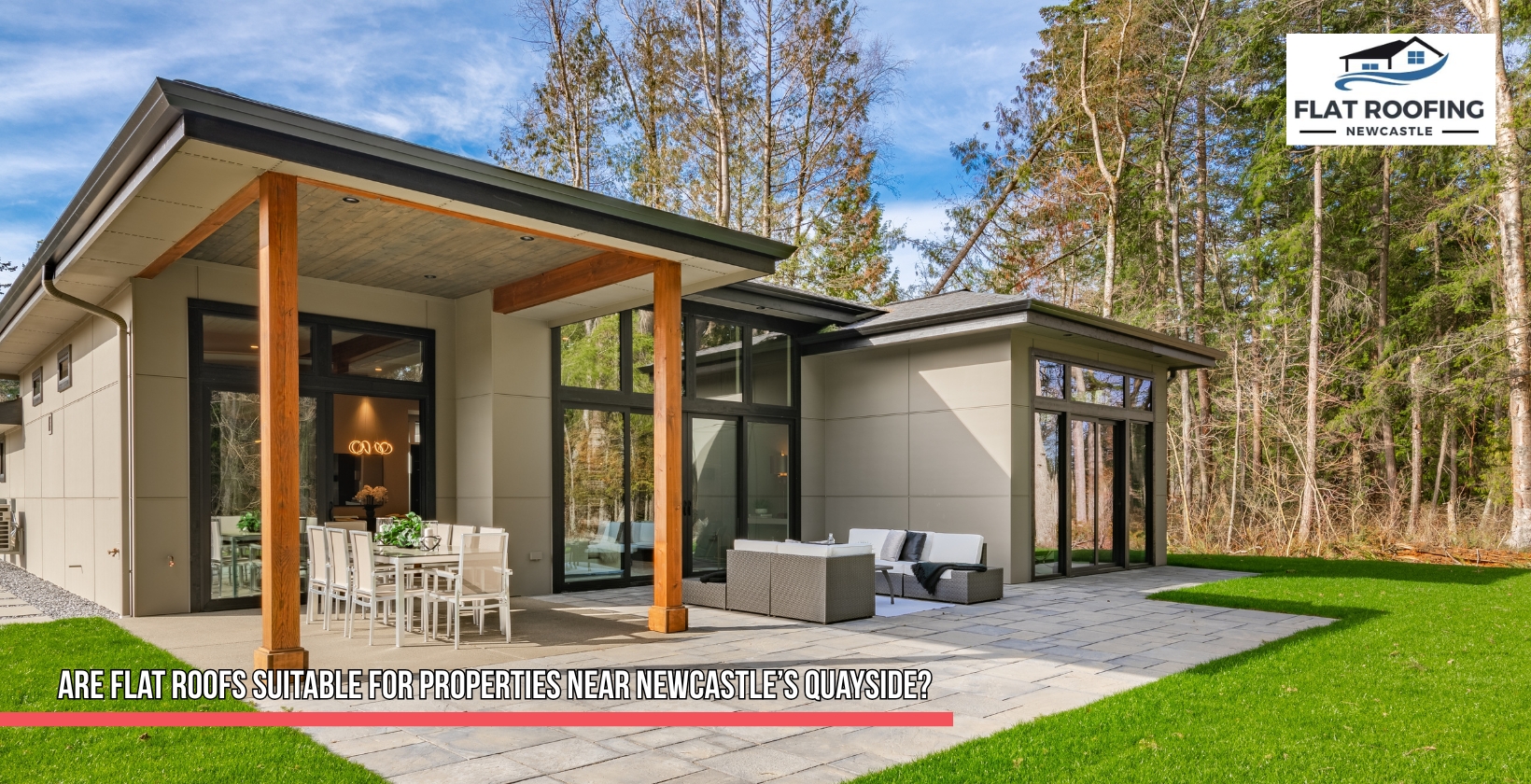
Newcastle’s Quayside is a popular area with modern buildings and riverside views. Many developers and homeowners are now choosing flat roofs in this city. These roofs offer a clean look and can make good use of space. However, with the area’s weather and location near the River Tyne, some wonder if flat roofs are the right choice. Finding out helps to start by understanding what makes the Quayside a unique setting for roofs.
The Quayside sits by the river, with historic and new buildings close together. It’s often windy and exposed to the elements, especially near the water. The mix of modern apartments and older conversions creates different roofing needs. Some buildings have limited space for traditional pitched roofs. This riverside setting also brings weather conditions that can affect roof performance.
The Quayside often sees heavy rain, strong winds, and damp air from the river. These conditions can put extra pressure on any roof, especially one with a flat design. Water must drain properly, or it can collect and cause damage over time. Flat roofs in this area must use strong materials and well-designed drainage systems. But even with good drainage, it’s important to consider how these roofs hold up against wind and rain.
Yes, flat roofs can handle strong wind and rain if installed correctly. Roofers must use secure fixings and waterproof materials to stop leaks and damage. A small slope helps rainwater flow into drains or outlets rather than sitting on the surface. It’s also important to check the roof regularly for signs of wear. Choosing the right materials can improve how well flat roofs cope with these riverside challenges.
Materials like EPDM rubber, fibreglass, and bitumen work well for flat roofs in damp areas. These options are waterproof, flexible, and resist damage from the elements. EPDM is especially good at handling changes in temperature and heavy rain. A durable surface also helps protect the roof from small branches, debris, or wind-blown rubbish. Still, even strong materials need regular checks and care in exposed areas like the Quayside.
Flat roofs near the river may need more regular checks than those in sheltered spots. Leaves, moss, and dirt can build up quickly and block drains. Checking the roof a few times a year helps prevent leaks and other problems. Cleaning debris and fixing small issues early keeps the roof in good shape. This upkeep also makes flat roofs a better choice for modern buildings and home improvements nearby.
Flat roofs work well on modern flats, especially those with a simple or square design. They allow for extra features like skylights or even small roof terraces. In renovations, flat roofs can help match the shape of older buildings while adding a modern touch. They also save space in areas where pitched roofs may not fit easily. One of their key benefits is supporting green roofs or outdoor spaces.
Many flat roofs in the Quayside area can support green spaces or terraces. These additions need strong structures and waterproof layers to prevent leaks. Green roofs can help with insulation and reduce rainwater runoff. Roof terraces offer outdoor space with river views, and they are popular in city homes. However, depending on the location, some of these changes might require planning approval.
Some buildings in the Quayside area may have planning rules due to location or age. Changes must follow local guidelines if the property is listed or in a conservation area. This is especially important for garage roofs, which often fall under stricter regulations due to their visibility or placement on smaller plots. Adding roof features like terraces or skylights may also need permission. Before starting roof work, it’s always best to check with Newcastle City Council. These restrictions can also influence choosing a flat or pitched roof design.
How Do Flat Roofs Compare to Pitched Roofs for Properties by the Tyne?
Pitched roofs shed water more quickly, which helps in heavy rain. But flat roofs take up less space and often cost less to install. Flat roofs also offer more usable space on top, such as for solar panels or green areas. Both types are common in the Quayside, depending on the building’s age and design. If you’re building new or upgrading, it’s worth comparing which style best suits your project.
Flat roofs are a smart choice for many new builds and modern upgrades. They match the clean lines of city homes and can add useful space. If built with care, they can last just as long as other types of roofs. Good design, strong materials, and flat roof maintenance services are key to long-term success. Regular upkeep helps protect against rain and wear, especially in riverside areas like the Quayside.
Topping It Off: Are Flat Roofs the Ideal Fit for Quayside Life?
Flat roofs work well for homes and buildings near Newcastle’s Quayside. They offer a modern look, save space, and can handle the riverside weather when built properly. Extra care is needed with drainage, materials, and maintenance. They are a strong, flexible option with the right setup and expert fitting. Proper planning makes all the difference regarding flat roofs in heavy rain, especially in areas like the Quayside, where conditions can be more intense.
© Copyright 2025 Newcastle Flat Roofing